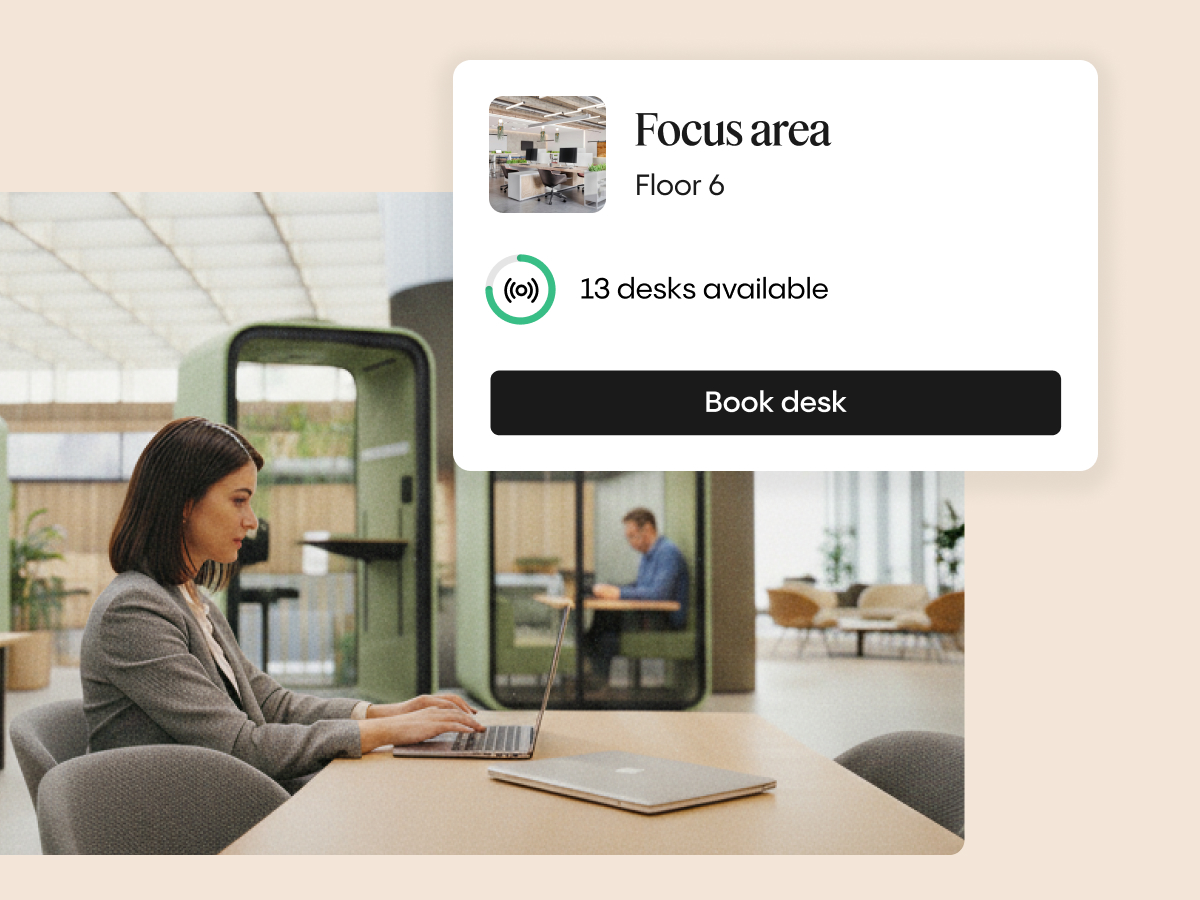
The benefits of tech-enabled offices are clear: employees have more control over their workday, they feel more autonomous, and they can collaborate more effectively. But you may have these questions running through your mind: “What about the privacy of the employees in that office?” “Can that still be guaranteed?”
All your concerns can be addressed, if you follow these main principles.
1. Prioritize workplace privacy
If employees feel like Big Brother is watching them with every step they take, they can experience a negative effect on emotional and physical stress. As a result, employee morale and motivation can decrease. If you overlook privacy, your brand-new office might achieve the exact opposite of what you are trying to achieve. Prioritize privacy at all times to ensure positive outcomes for your business.
2. Always give control to the end-user
Privacy means being able to keep certain information to ourselves and also having the ability to control what happens with our personal information. It also refers to being able to do things without interference by others. That is why successful businesses always give complete control to their employees. In practice, that means you actively ask them whether or not they agree with you collecting specific types of data. When your employees feel like they are the ones in the driving seat, they will better appreciate office technology functionalities, resulting in higher adoption rates.
3. Be conscious of the two main types of data
When it comes to data collection in tech-enabled offices, there are two main types of data: anonymous building data and people-related data.
Anonymous building data is data related to general usage in the workplace and helps answer the following questions:
- How many people have used specific types of meeting rooms?
- What are the most popular workspaces?
- What rooms are used for hybrid meetings?
- What are the occupancy levels on different floors?
These insights are not relatable to any individual in your organization and enable you to do the following:
- Improve occupancy rates in your office
- Reduce energy costs
- Improve overall employee well-being.
The second type of data is people-related and can help boost the way your employees interact and collaborate. You can allow individuals to live-share their location with all other employees, for example, so they can be found by others who want to have a quick ad-hoc meeting when a moment of creativity strikes. This type of information is more sensitive to privacy.
Always be your own devil’s advocate before classifying data as only building-related. Is the seemingly anonymous occupancy of a room still anonymous if only Claire and John have access, and Claire is on a holiday?
4. Make conscious technology decisions
When you start your office optimizationjourney, you will learn that several technical solutions can achieve the same data collection. For example, when you want to measure occupancy in meeting rooms, you can choose between using a Wi-Fi-based solution or using smart sensors. In certain scenarios, sensors can be less secure when it comes to privacy. Be proactive, and ask your suppliers to explain all options you have and how they impact privacy. That way, you enable yourself to make an educated choice on the option that best protects employees’ privacy.
5. Establish transparency
The final key to a responsible privacy approach is creating clarity for your employees on what information may be collected and whether it can be passed on to others. Tell employees when you collect personal data and for what reason you are collecting it. Do not forget to always include to what party that information might be passed on to. Allow your employees to access personal information about themselves at all times and enable them to have that information corrected or verified if it is incorrect, out of date, or incomplete.
Create a great place to work
Modern offices should be designed to improve well-being, autonomy, and a sense of belonging in organizations. If you sacrifice employees’ privacy in the process, you could achieve the exact opposite. Use the principles in this article as an inspiration to create your own set of principles that work for your situation.
If you are not sure what features are right for you, our workplace experience advisors are happy to help.


.jpg)
